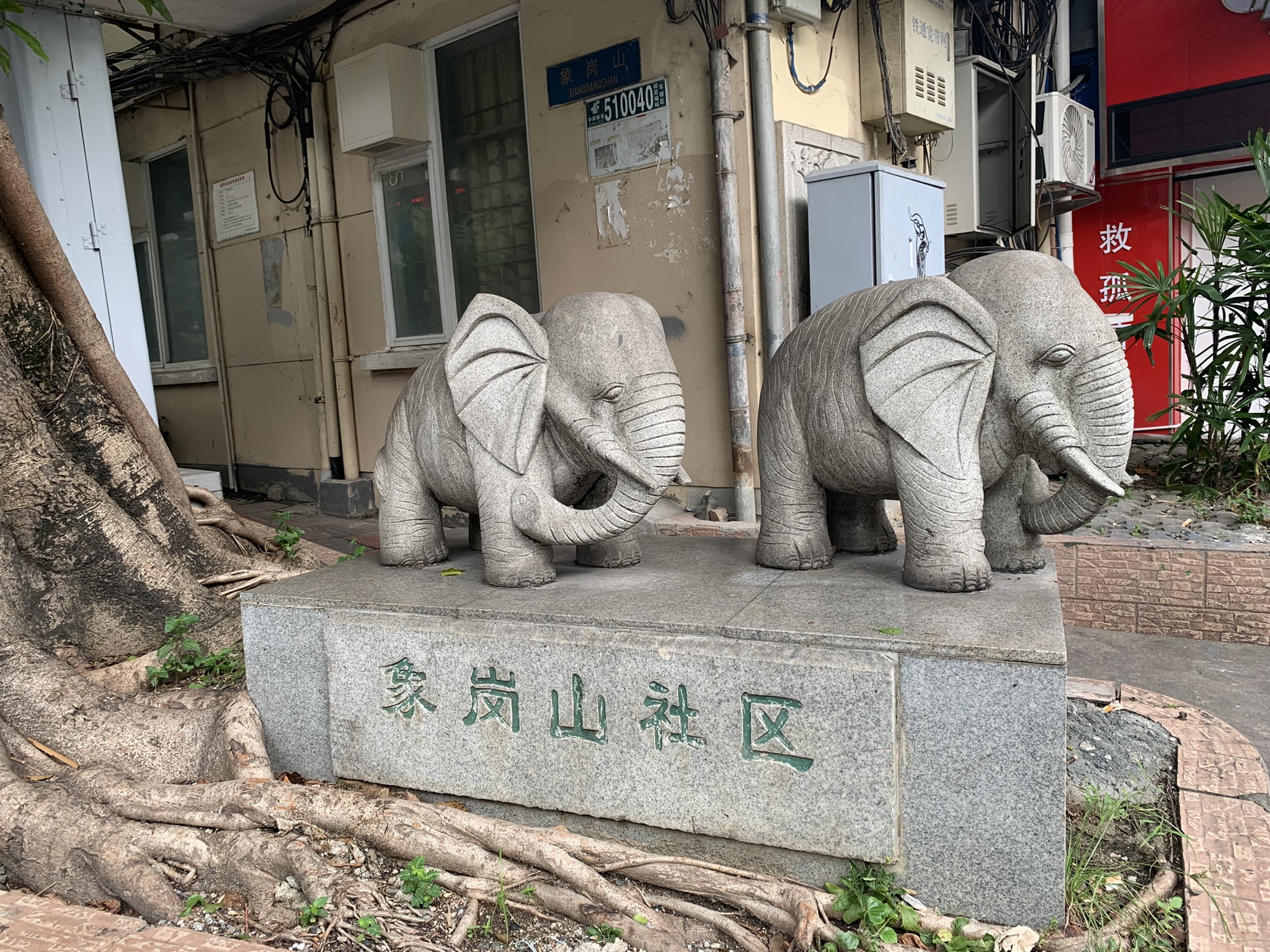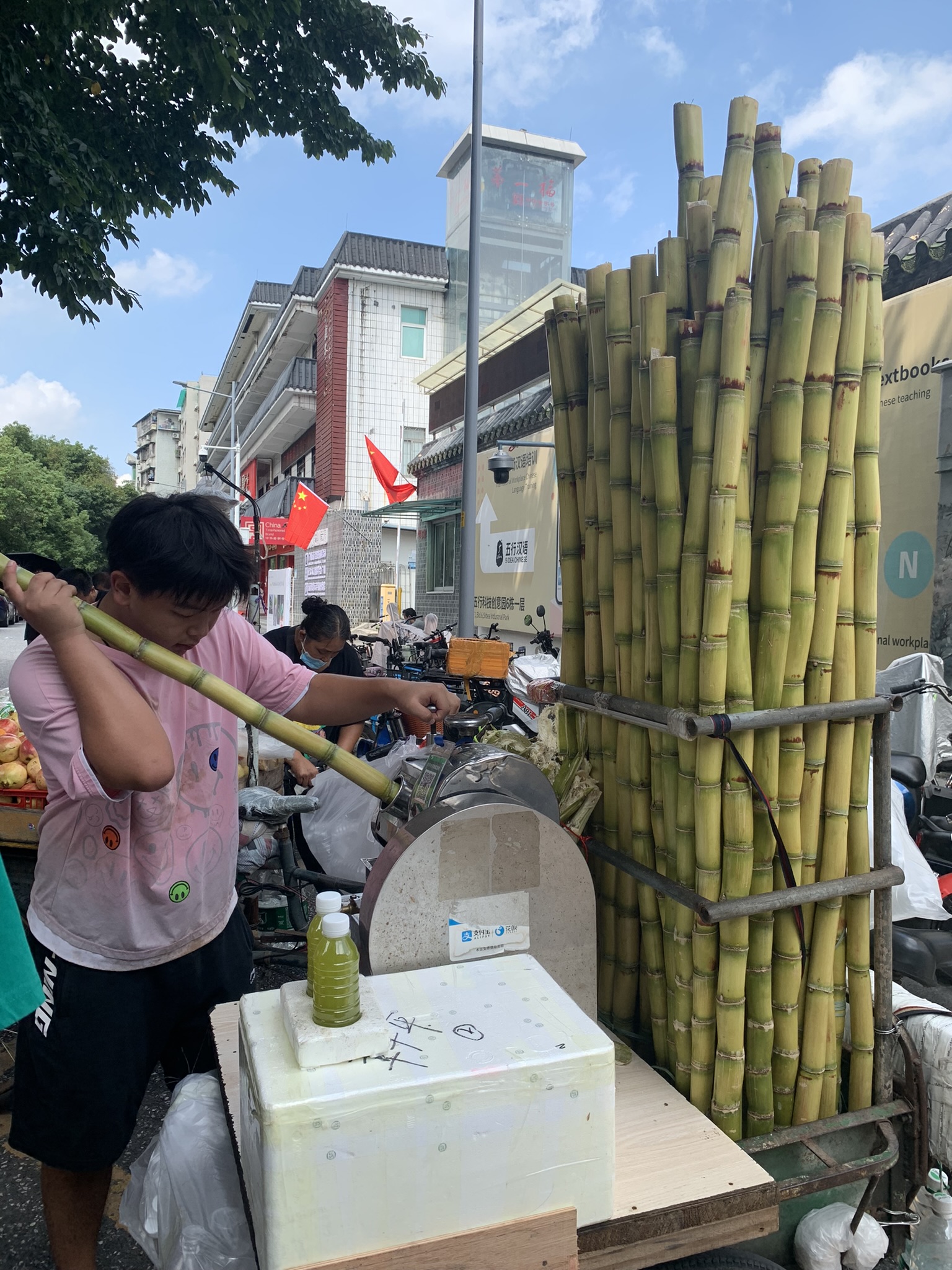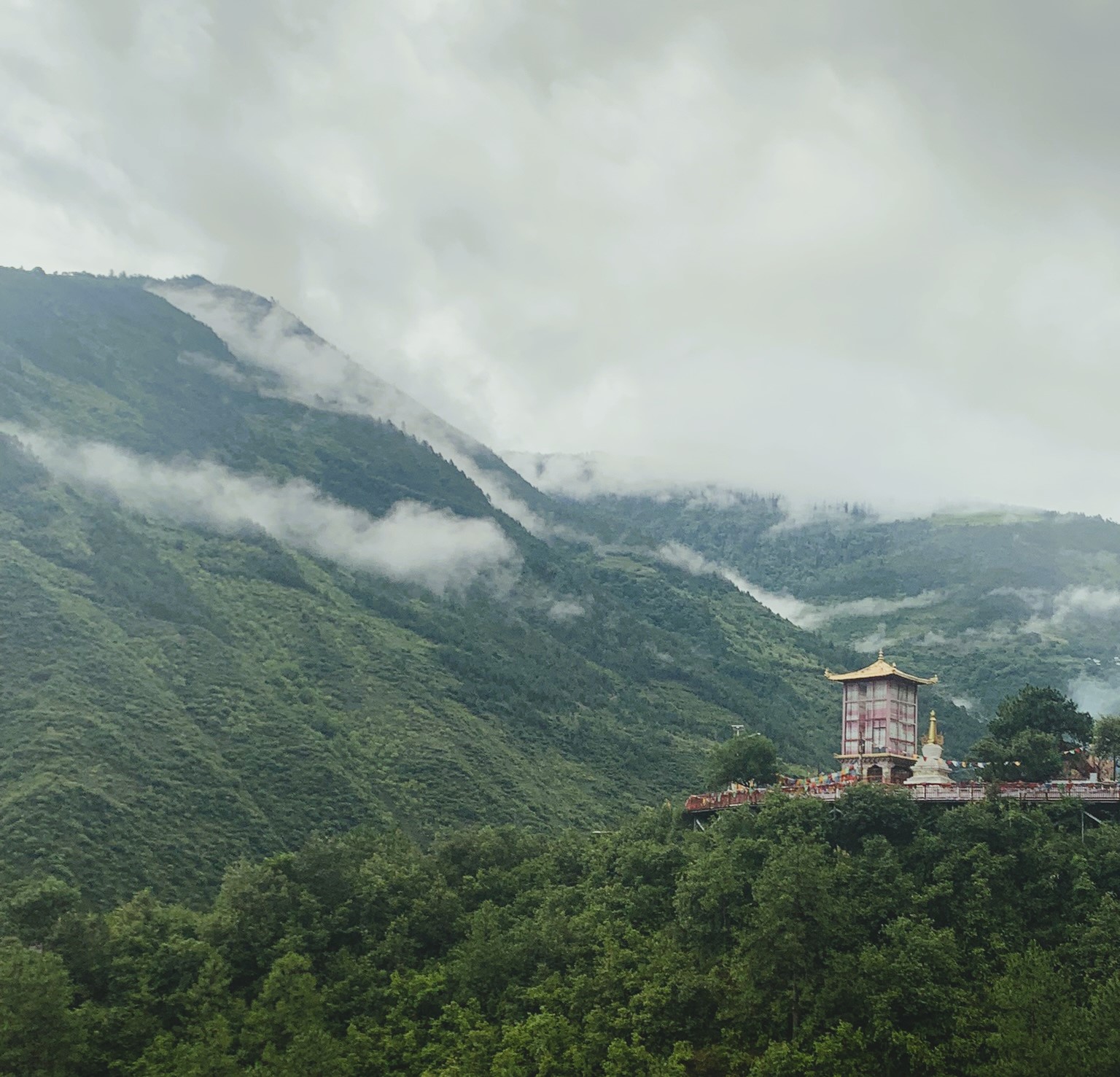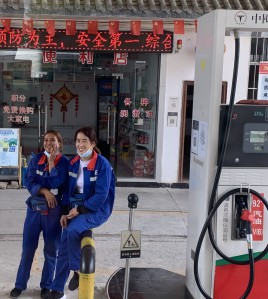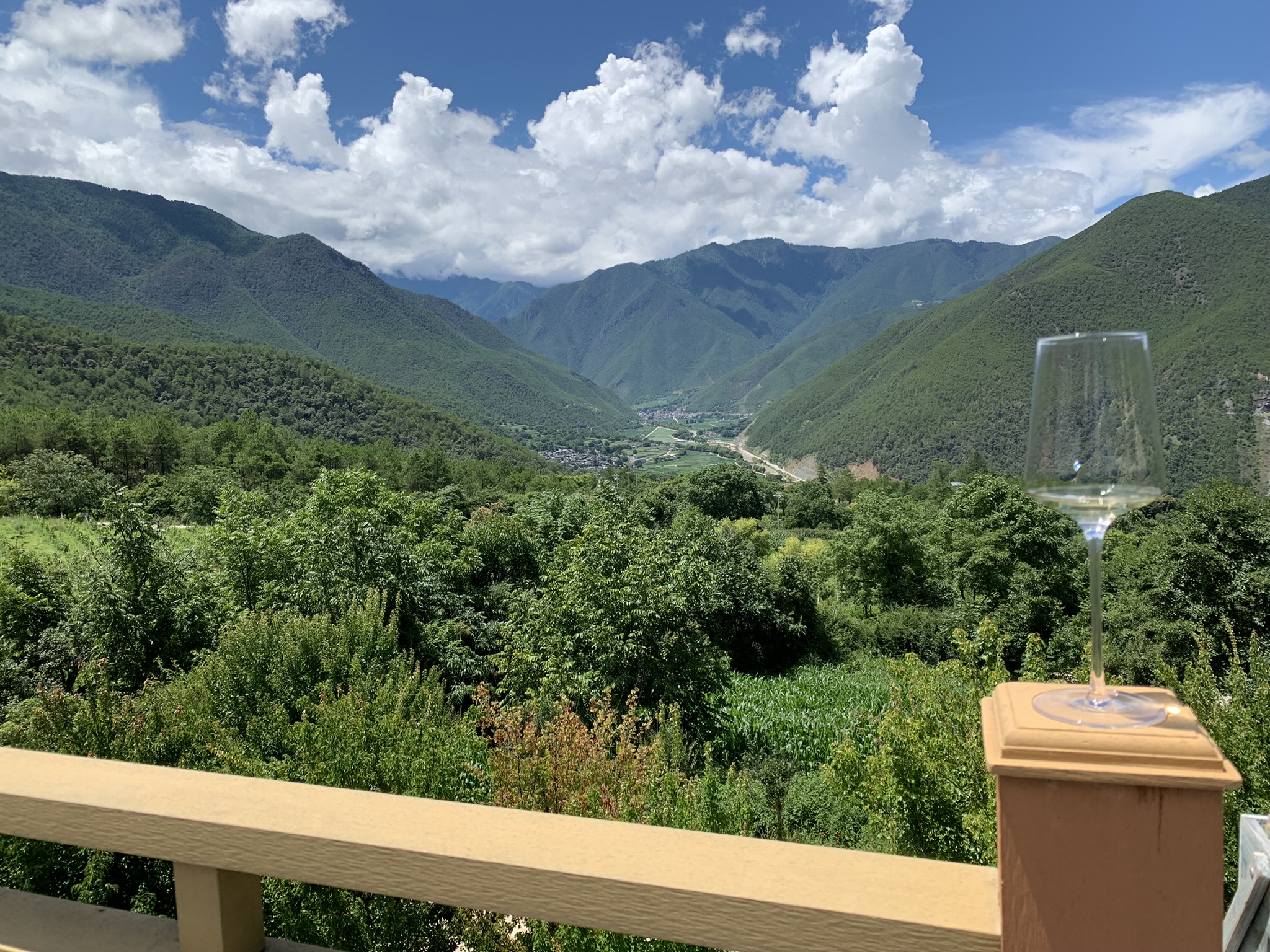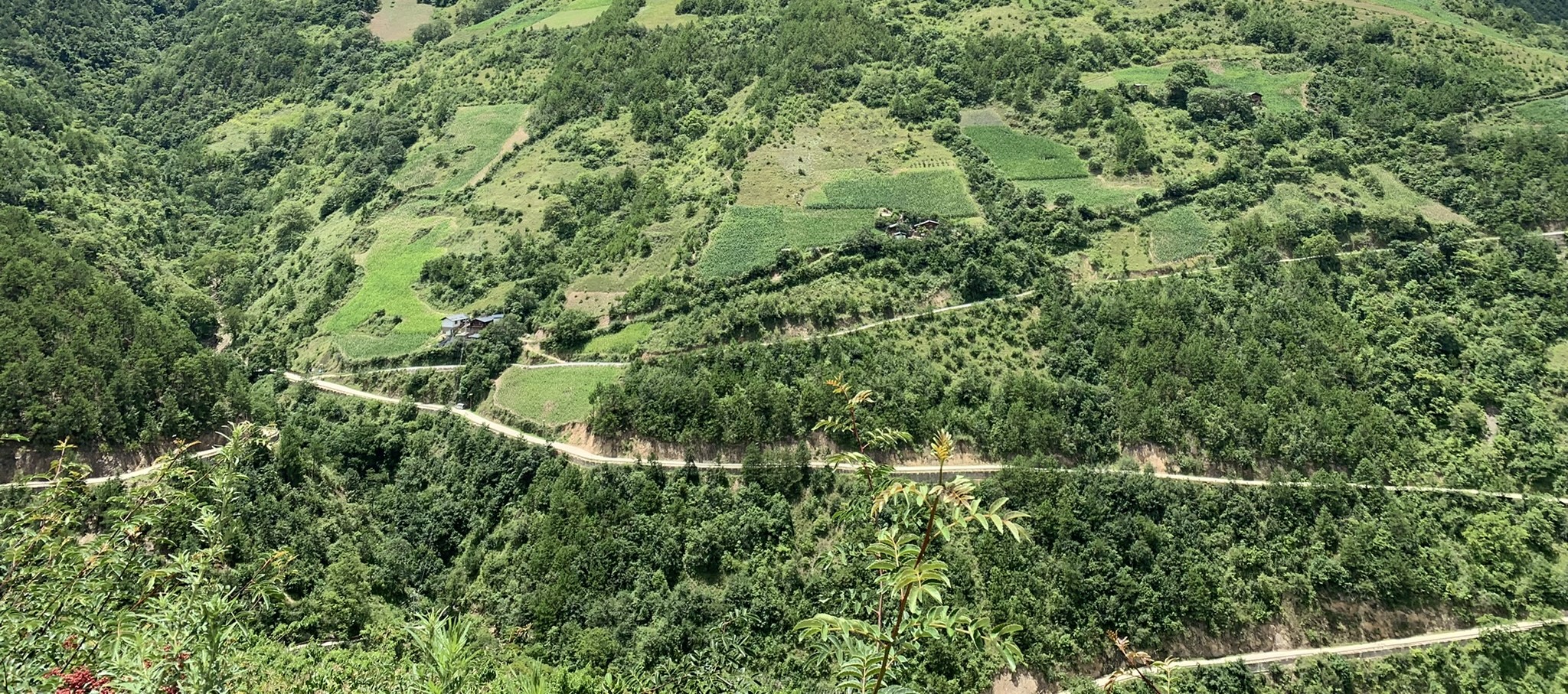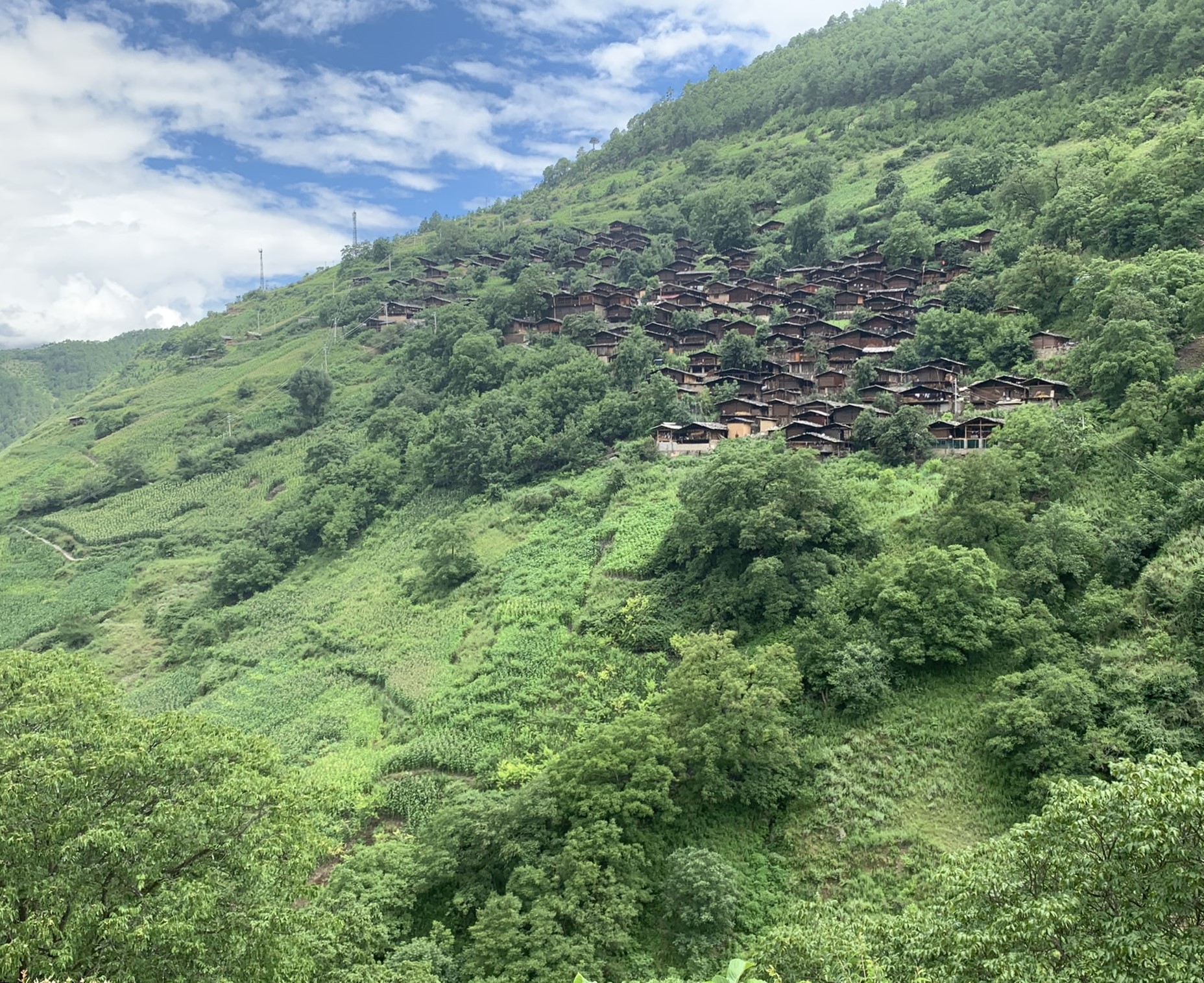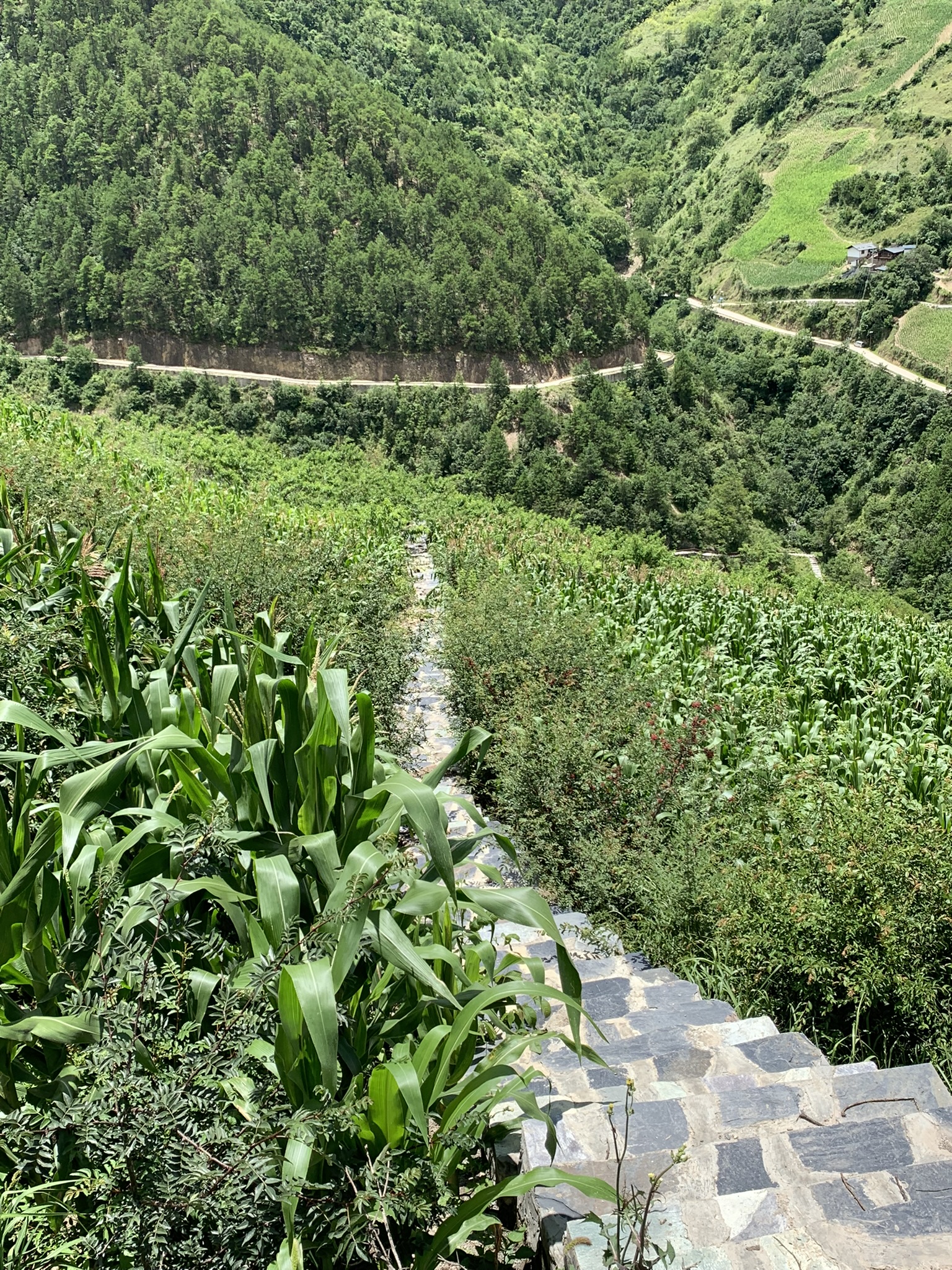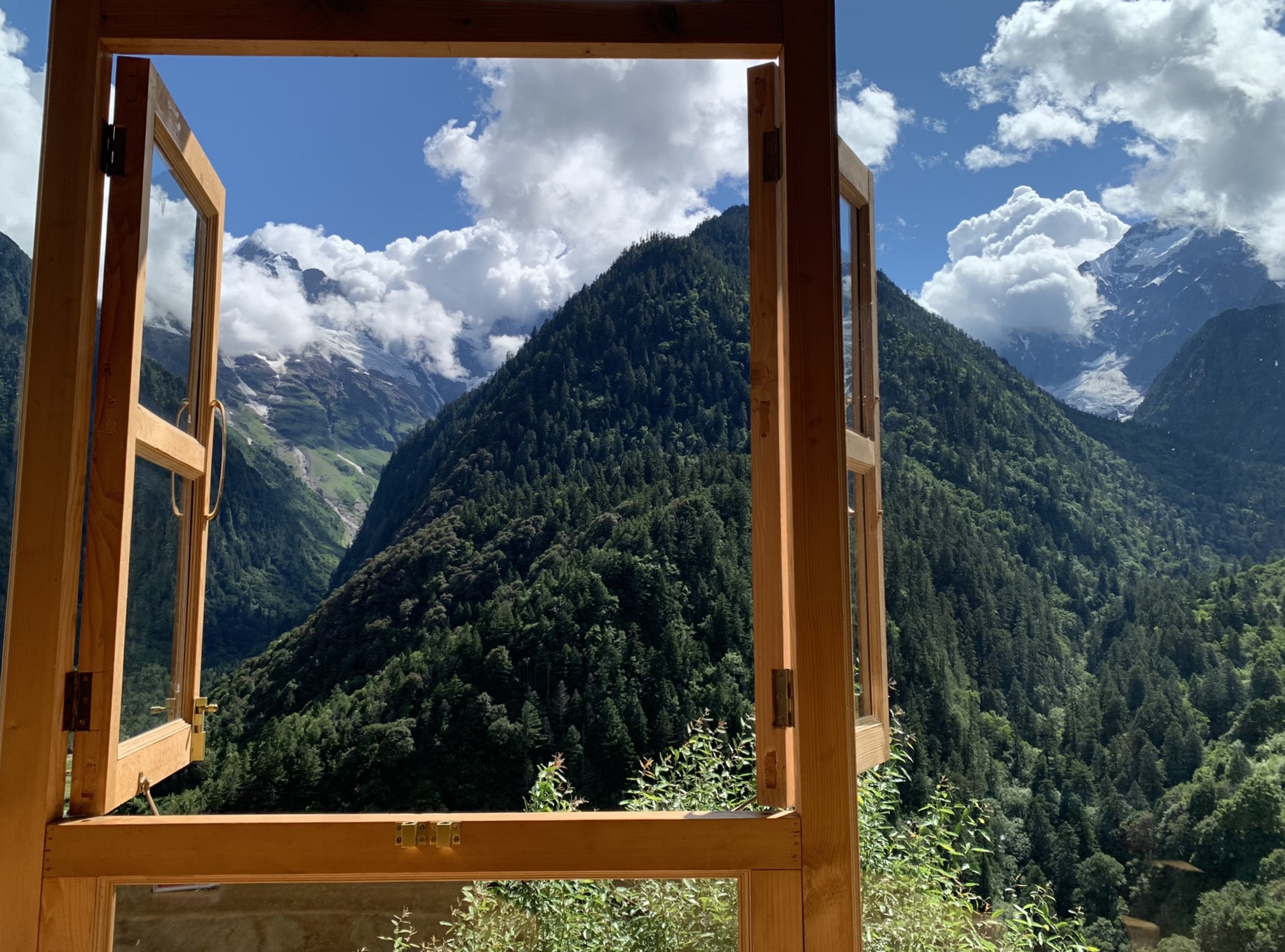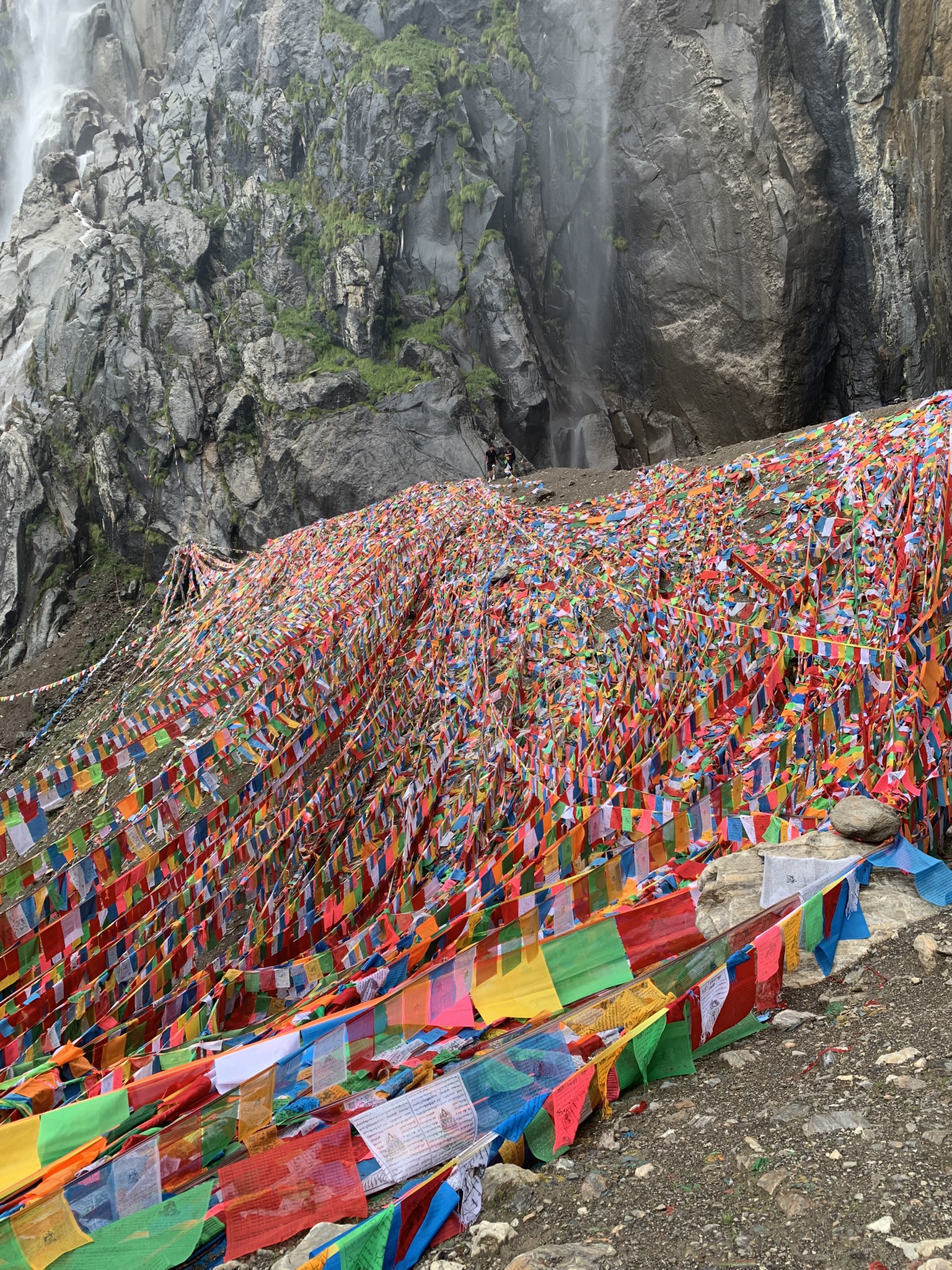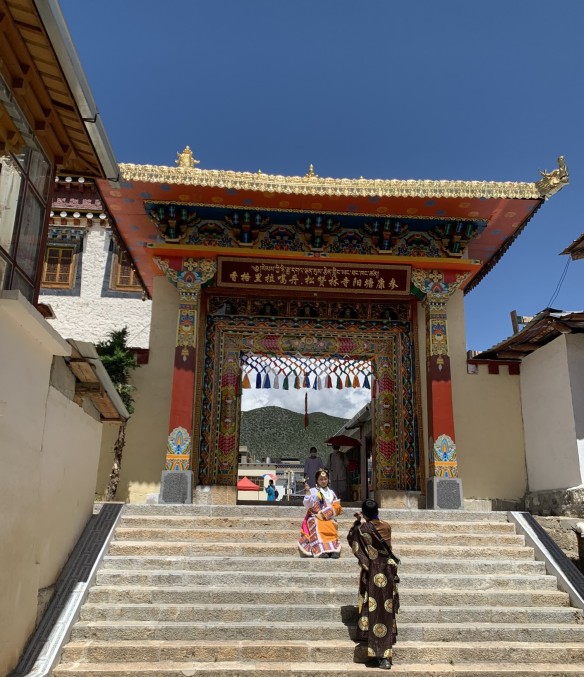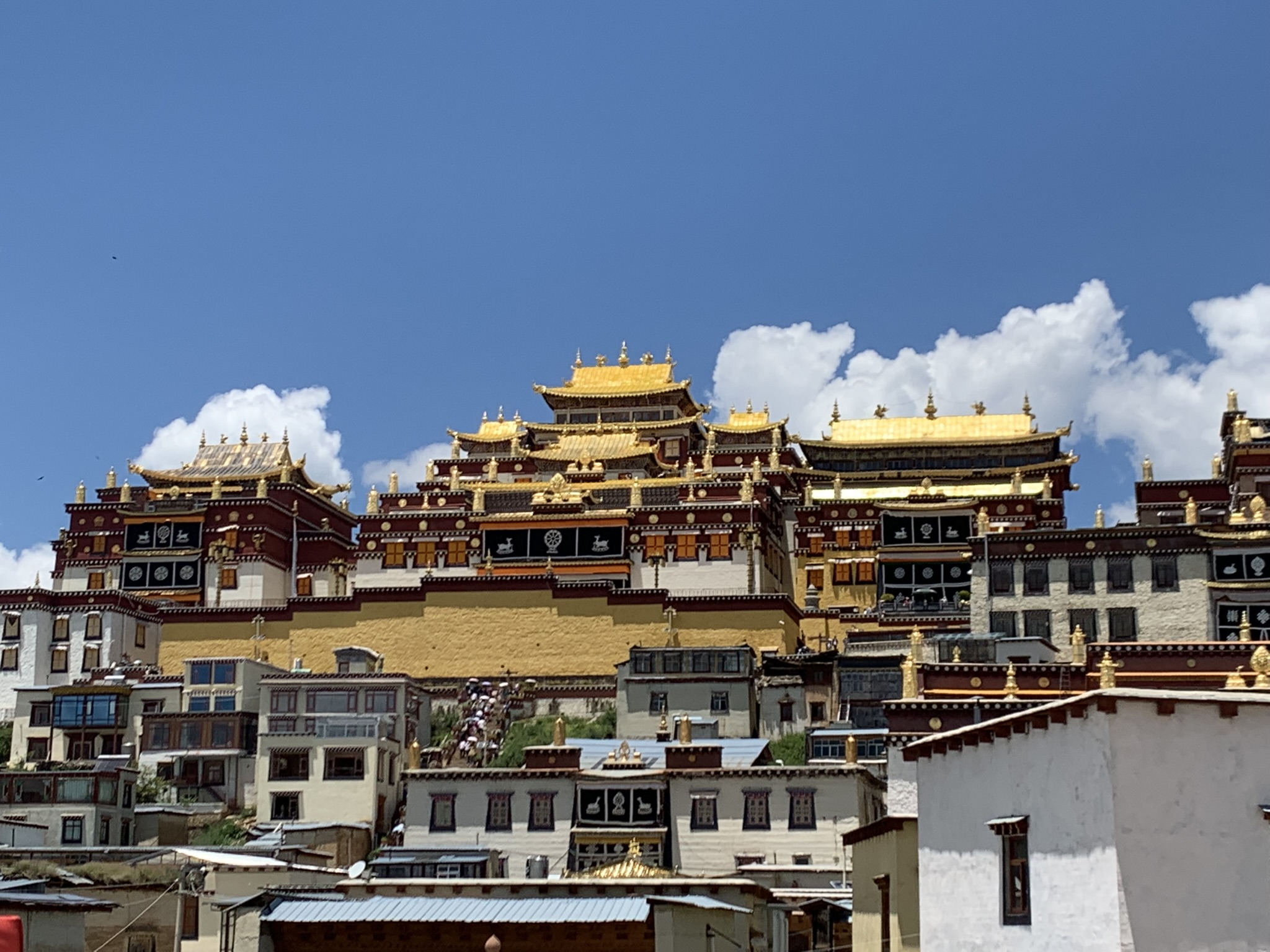
Tiananmen Gate
For all the time I’ve been in China, Beijing has not just contained the Forbidden City, but been the Forbidden City. No city was harder to get into. Early on, colleagues in Beijing and I discussed how we’d for sure visit each other. Hah! For the next 15 months there was always something (Olympics, CCP National Congress) preventing visitors from getting in. And those who lived there, if they traveled out, couldn’t get back in.
Although most of the people I know have left Beijing by now, I still wanted to visit. So I tacked a day onto Memorial Day weekend for my final trip within China.
It was not all smooth sailing.
Figuring a guide would make buying tickets and navigating top sights easier, I got a recommendation from a colleague and arranged a full day of blockbuster sightseeing. Top priorities: the Forbidden City (aka former Royal Palace), Temple of Heaven, Tiananmen Square. Time allowing, the Summer Palace. I told the guide that Saturday, Sunday, and Monday were all possible. She suggested Monday. A small part of my brain thought I should maybe double check that the sights I wanted to see were actually open on Monday, but a larger part thought, she’s the tour guide, obviously she knows!
I gave her my passport info so she could book tickets. On THURSDAY (!) she messaged me that oops! The Forbidden City is closed on Mondays. Also, tickets were sold out for Saturday and Sunday and Tuesday (my last day). There was still a chance I’d be able to get tickets on Saturday though, if went to the ticket office first thing in the morning. When I panic-contacted a random tour company they confirmed that tickets were sold out and let me know that getting to the ticket office required going through Tiananmen Square, for which I would need a (free) reservation. They kindly, and at no charge, made a reservation for me.
A BUSY FIRST DAY
After a much-delayed flight that saw me checking into my hotel in the wee hours of Saturday morning (Them: “We’ve upgraded you to a room with a Forbidden City view” Me: “Great, that may be as much as I see of it”), instead of having a lie-in and enjoying a generous hotel breakfast buffet before starting my Saturday, I slept three hours, slammed down an in-room cup of Nespresso, and made my way to Tiananmen Square. I then passed through security, waited in line to pass through the Tiananmen Gate to the Meridian gate, and waited in line again for tickets, mentally planning my “The Forbidden City Remains Largely Forbidden” blog post.

Ticket buying line
But…I got in!
True, it was crazy-crowded and pouring down rain and all I had was a much out of date Lonely Planet to provide context for what I was seeing. But I was there.

The Meridian Gate from inside the Forbidden City

And despite the crowds, and the fact that most of the cool artifacts from the palace were long ago spirited away to Taiwan along with Chiang Kai-shek, it was worth going. Only by visiting can you really get a sense of the vastness of the palace complex with its grand ceremonial spaces and warren of living quarters and administrative offices.
Old-timey costumes available for picture-taking
Having expected my morning to be leisurely, I had signed up for an afternoon historical walking tour focused on the Boxer Rebellion, and an evening hutong food tour.
Fortunately, the weather cleared up and the walking tour was both pleasant and informative.

French post office building of the former legation quarter
The Boxer Rebellion started around 1900, with the goal to drive all foreigners from China. The walled-off diplomatic quarter of Beijing came under attack and was defended by the eight nation alliance of Austria-Hungary, France, Germany, Italy, Japan, Russia, the United Kingdom, and the United States
After the Boxer Rebellion, more European Influence started to be seen in greater Beijing.
Also fortunately, because my feet were by now SPENT, the food tour was by tuk-tuk through Beijing’s maze of hutongs (alleyways). The dishes were all excellent and my co-tourists, from Taiwan, flattered me with praise for my chopsticks skills. A satisfying end to the day.
THE GREAT WALL
The Long Wall, as it translates to in Chinese, is, you know, very long. So there are many sections to choose from. Mutianyu and Badaling are the most popular and most conveniently located to Beijing. Some parts are wheelchair accessible and can be reached via cable cars or chairlift; at Mutianyu you can even take a toboggan down from the top.
I wanted fewer crowds and a more in-depth experience than it sounded like cable cars and toboggans would provide so I arranged a full day hike.
The weather was glorious and we began with a steep walk up to the East-Five-Eye watchtower.

There, a left turn brings you to the unrestored wall and a right turn takes you to the restored section.
We walked one watchtower over to the left, just to get a taste of the unrestored experience, and then doubled back and continued for several hours on the restored (but still challenging) Great Wall. Despite all the photos I’d seen, I didn’t realize how hard walking on the wall itself would be. So many ups and downs and stairs that were too tall for my short little legs and downhill sections that were so steep I had to take tiny baby steps the whole way down.

But how many times do you get to visit the Great Wall? For most of us, not many. I’m glad I spent the money and energy to make it count.
On the way back to Beijing, my pre-arranged city sightseeing guide contacted me to tell me that she had successfully reserved tickets for Tiananmen square (of which I’d had a fleeting glance on my first day) and the Summer Palace. Also, she said, the Temple of Heaven was closed on Mondays but the park was open so I could see the top of the Temple from behind the wall.
From behind a wall? I mean…are you fucking kidding me? I told her we’d discuss it the next day, then returned to the hotel and gorged myself on complimentary Executive Lounge food and beverage before soaking my muscles in a hot tub and falling into bed.
WITH MY TOUR GUIDE
In the morning, my guide and I finally met in person for a seriously abridged sightseeing plan starting with the Summer Palace.
The Summer Palace is a whole complex of Classical Chinese Gardens, temples, and living quarters
Kunming Lake is the focal point of the Summer Palace. Dowager Empress Cixi angered people when she used money earmarked for the navy to fund some of the more lavish projects here, like a marble “boat” which officially belonged to the navy but was just a fancy place for royalty to enjoy good views.
After lunch, it was off to Tiananmen. I wasn’t expecting much and it lived up to my low expectations. Tiananmen Square a lot of things (historic, meaningful to many Chinese people) but one thing it is not, is beautiful.

It’s a giant concrete square with a heavy security presence where Very Important Things have happened. Westerners immediately think of 1989, but there were also student protests in 1919, the proclamation of the People’s Republic of China by Mao Zedong in 1949, and more protests in 1976 mostly against the so-called Gang of Four.
The Monument to the People’s Heroes is in the center and many important PRC buildings surround the square, like the Mao Zedong Mausoleum, the National Museum, and the Great Hall of the People. Seeing Lenin’s waxen visage in Moscow was enough embalmed hero of communism for me so I wasn’t planning on visiting any of the buildings in Tiananmen which was a good thing because guess what else is closed on Mondays? Every building here except the public toilet and the gift shop. We learned this when my guide exclaimed she’d never seen Tiananmen so uncrowded and she asked a local guard why. Sure, you learn something new every day, but one of the things you don’t expect your supposedly experienced Beijing tour guide to learn is what Beijing sights are closed on Mondays.
ANYWHO…she was a very nice person and she did offer to take me (no charge!) to the Temple of Heaven the next morning but I knew I’d be pressed for time as I also had a lunch appointment with a friend at the embassy. It was time to cut my losses with this guide. She had mostly made my trip more stressful—the opposite of why I hired her. She did however, join the Taiwanese food tourists in complimenting my chopsticks skills!
FINAL STOPS
It was again pouring down rain as, on my final day, I made my way to the second high-priority sightseeing stop I had expected to visit with a guide but was instead visiting solo. I will concede that there was a decent view from behind the walls. But would I have been 100% satisfied with only that view? I would not.

My final stop, the American Embassy, was the most intimidating. Security all over Beijing is pretty high. Lots of mafan, with multiple requests to see my passport or even my Diplomatic ID (which no one else has ever cared about, ever) and special rules for foreigners who want to buy a simple subway ticket. Oh and let’s not talk about the airport pat-down/groping I was treated to. The security situation around our Embassy though…that is next level. There’s our own guards of course, but several additional layers of security are provided by the Chinese who just, you know, want to keep an eye on things.
After lunch with my colleague and her husband, I headed back to Guangzhou for the last time. The last time!
My overall impression of Beijing was excellent. The food was tasty, the historic sights were interesting, and, for all you hear of Beijing’s new construction and how they’ve bulldozed their historic hutong neighborhoods into oblivion, there were way more authentic traditional (and now pricey and highly sought after) hutong homes and neighborhoods than there are in Guangzhou or Shanghai.

From my 17th floor hotel room you can get a bird’s eye view of a tightly packed hutong neighborhood.
I definitely wouldn’t mind visiting again, but if that ever happens, it won’t be for a while.
Not a bad way to wrap up my China travels, all things considered.




























































































































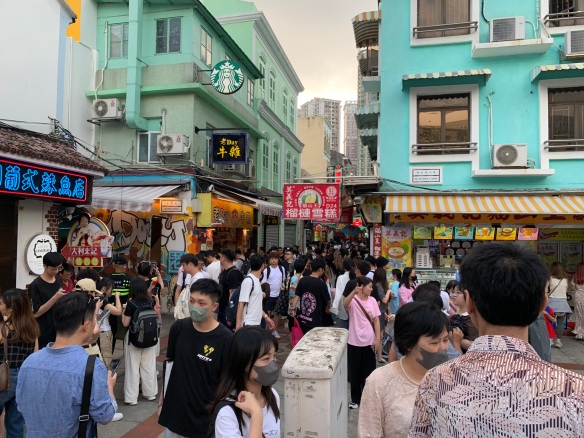 People call it “the Las Vegas of China” but pre-pandemic it actually far outpaced its American cousin in parting fools from their money.
People call it “the Las Vegas of China” but pre-pandemic it actually far outpaced its American cousin in parting fools from their money.






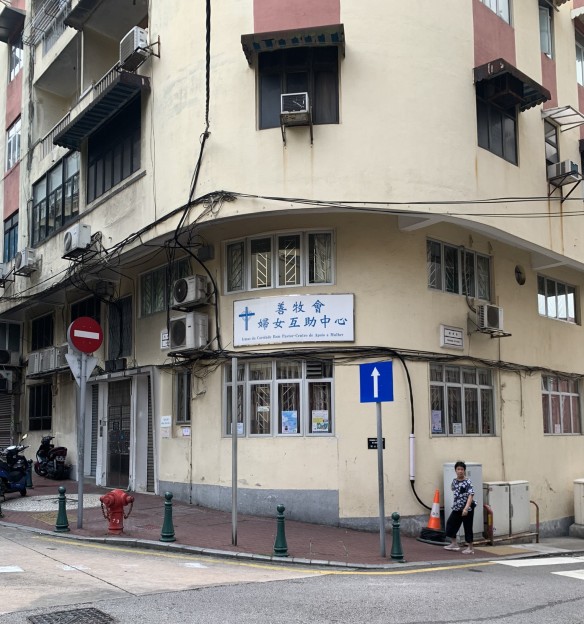
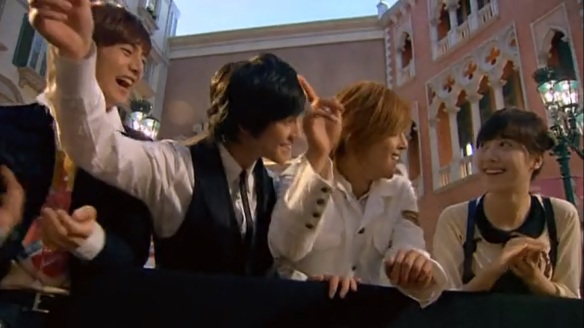 Do I wish I had more high minded taste? Sometimes.
Do I wish I had more high minded taste? Sometimes. 




























































































































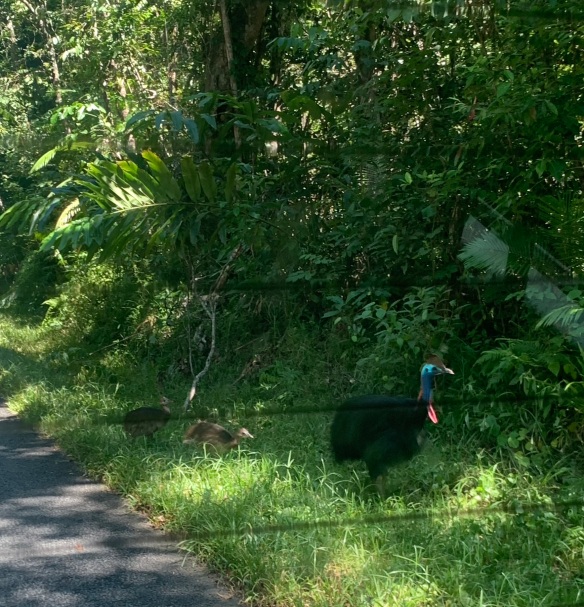




































































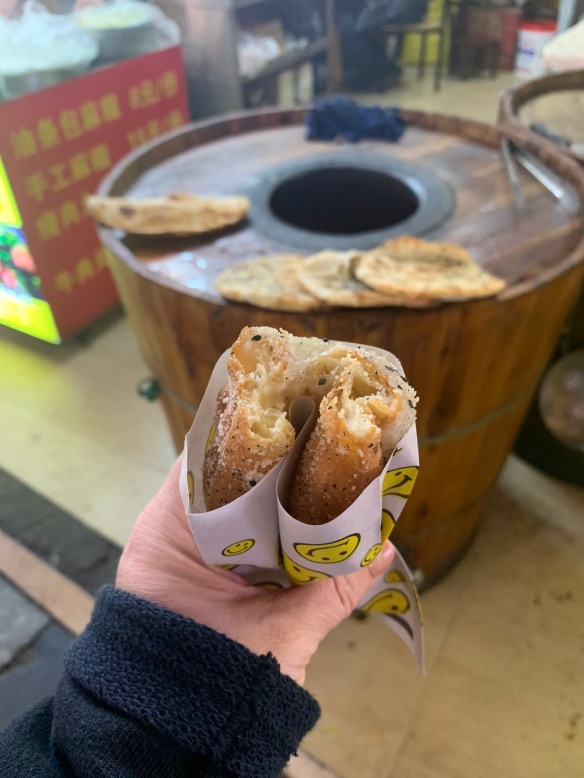
























































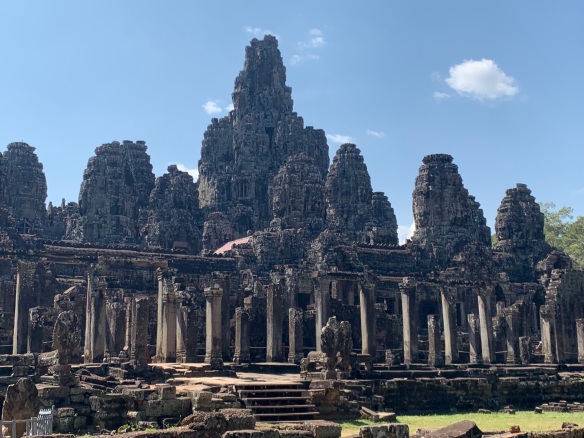










































































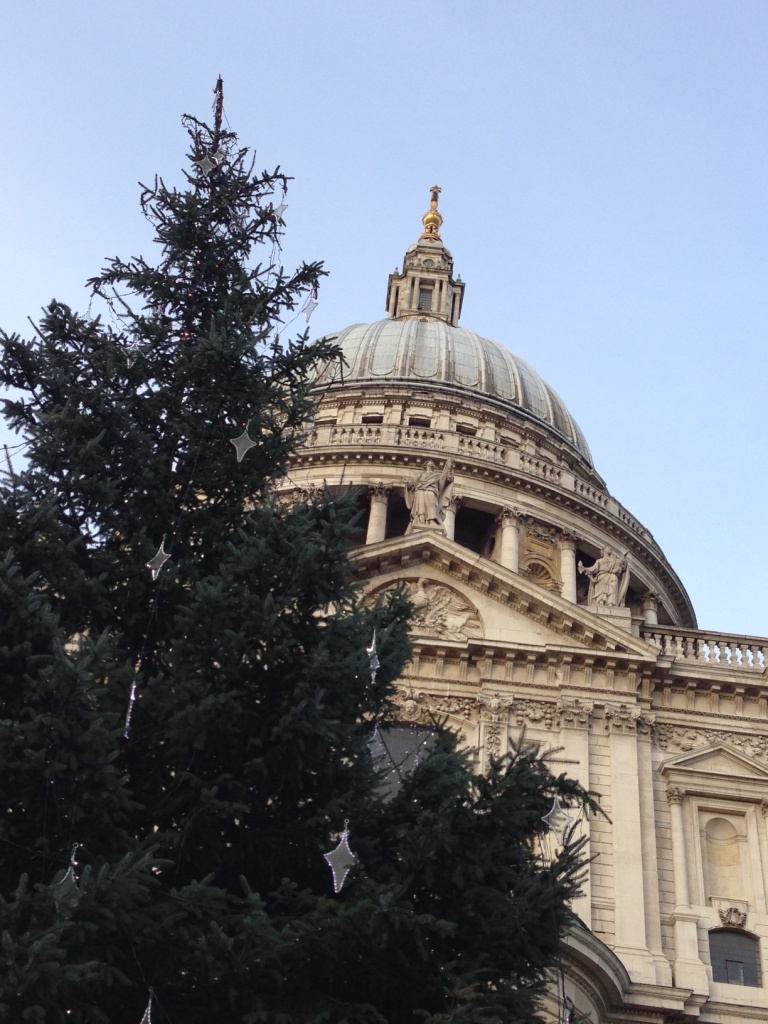
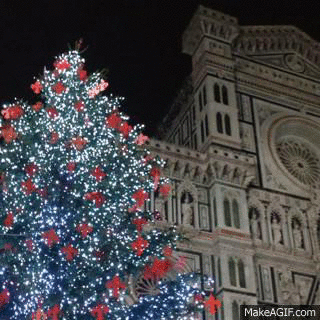
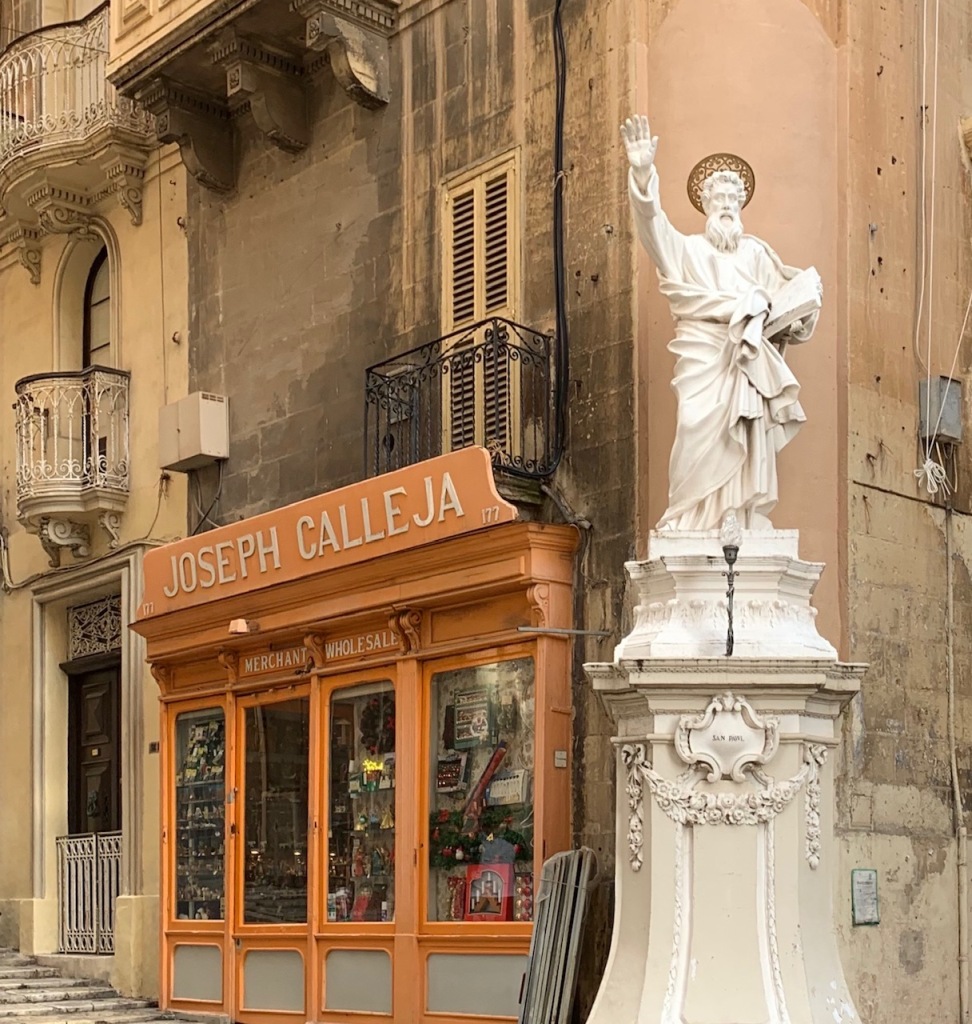
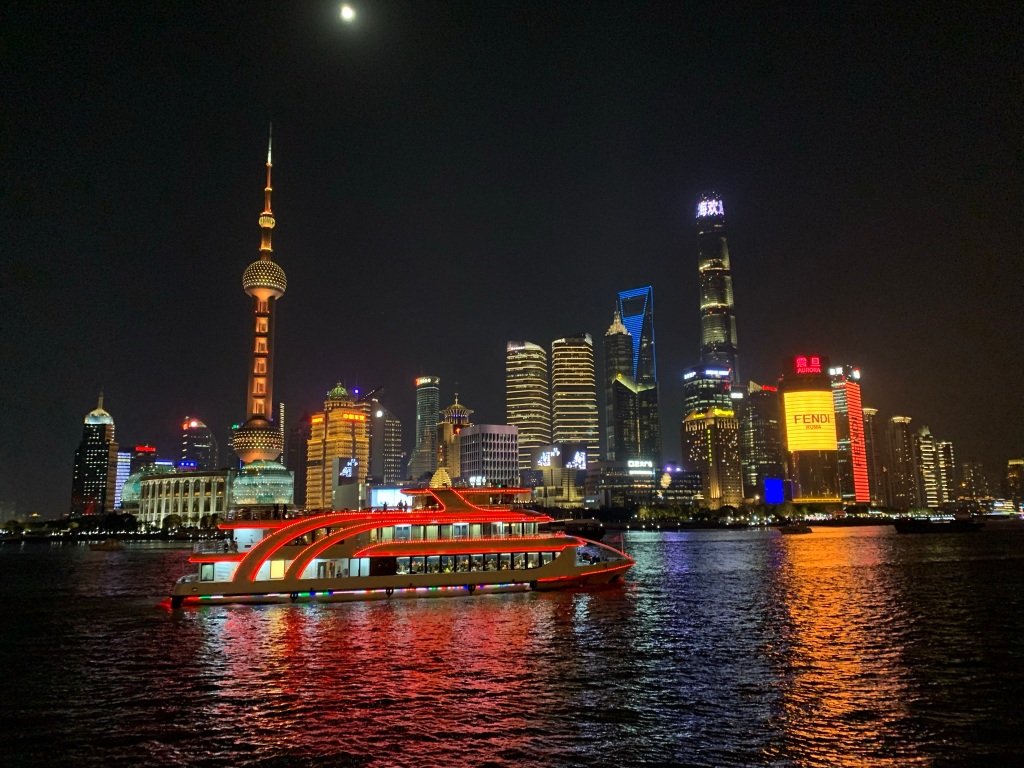
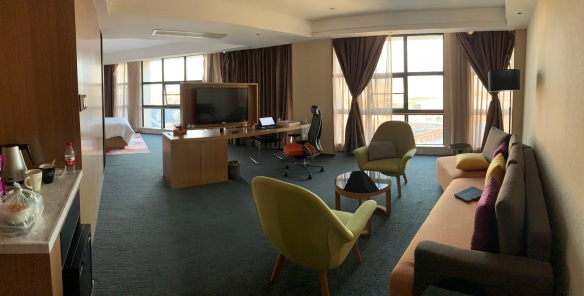
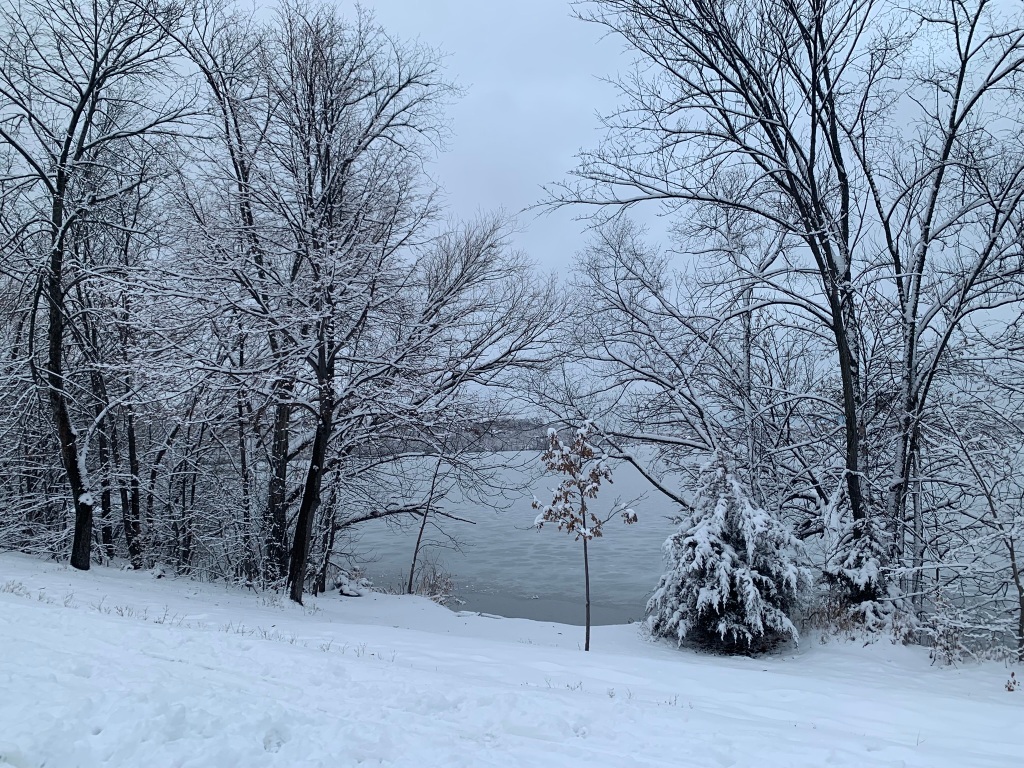
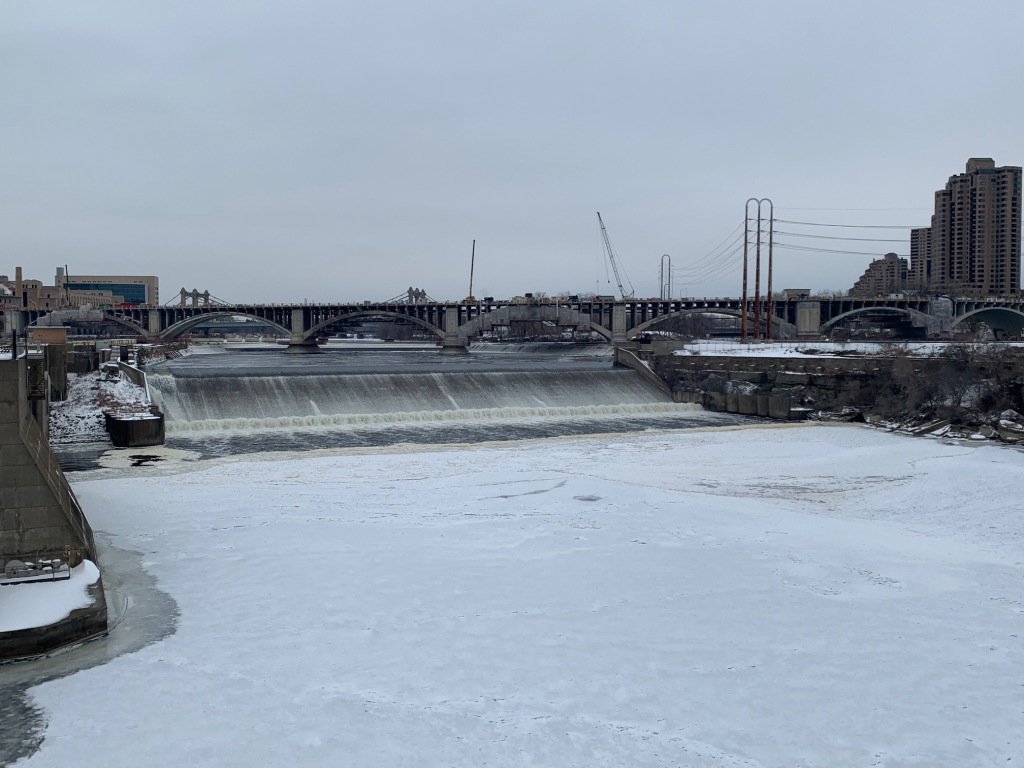
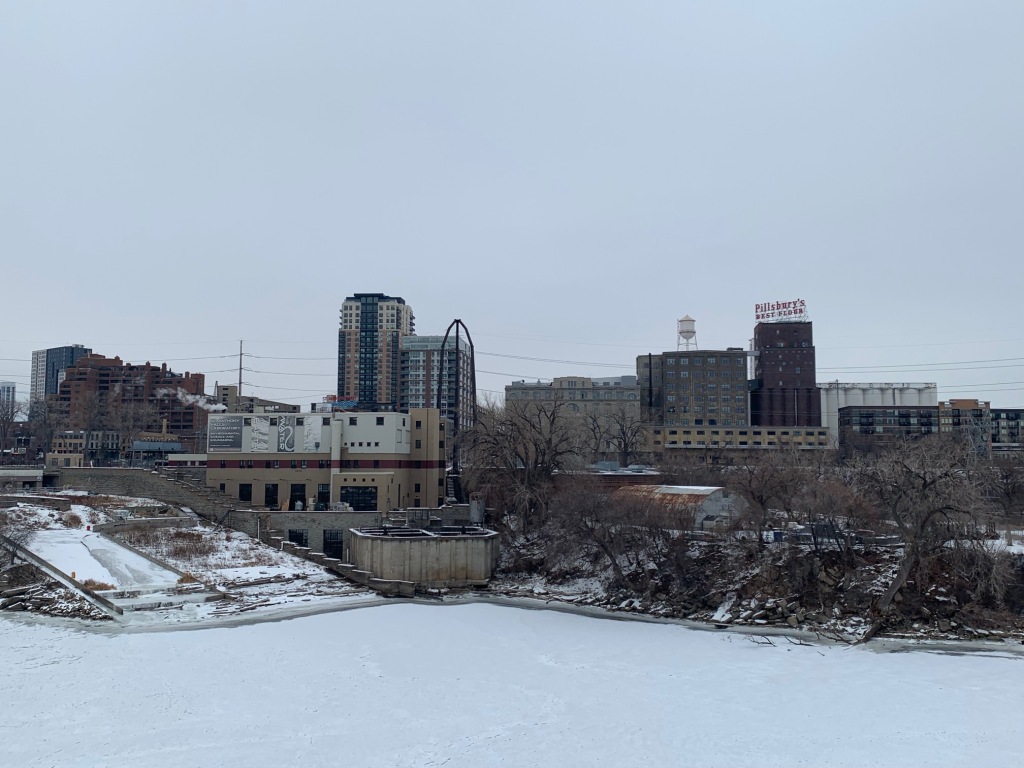
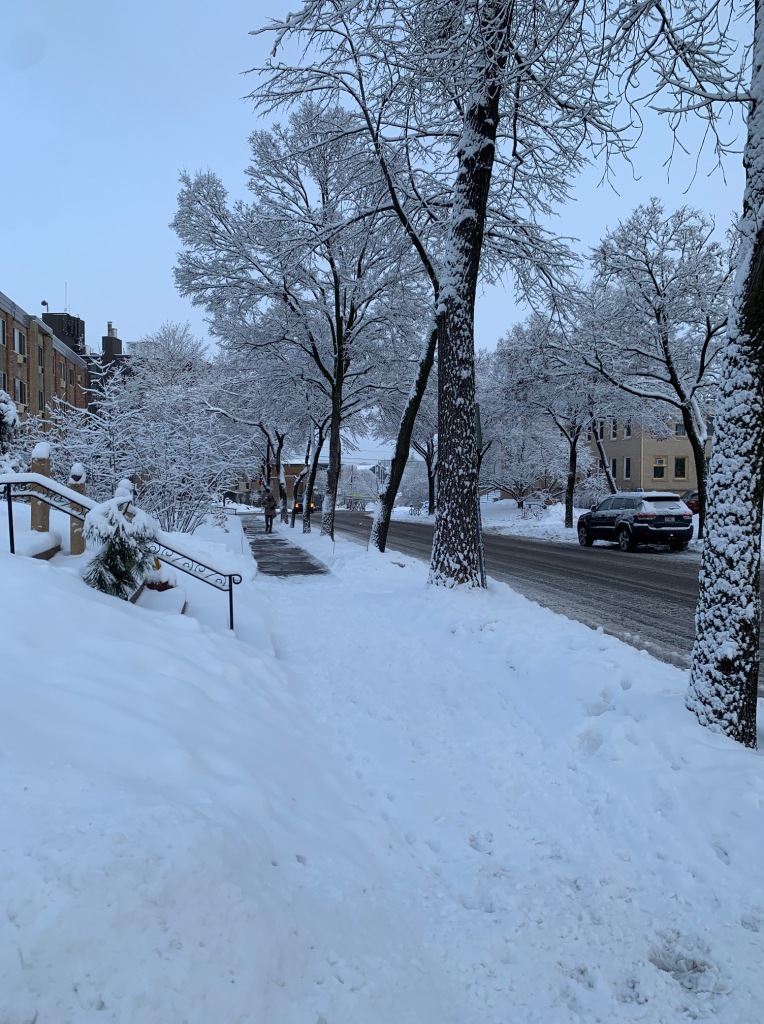
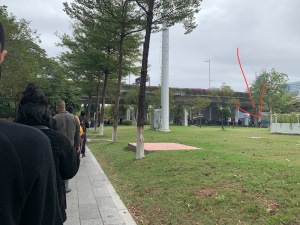
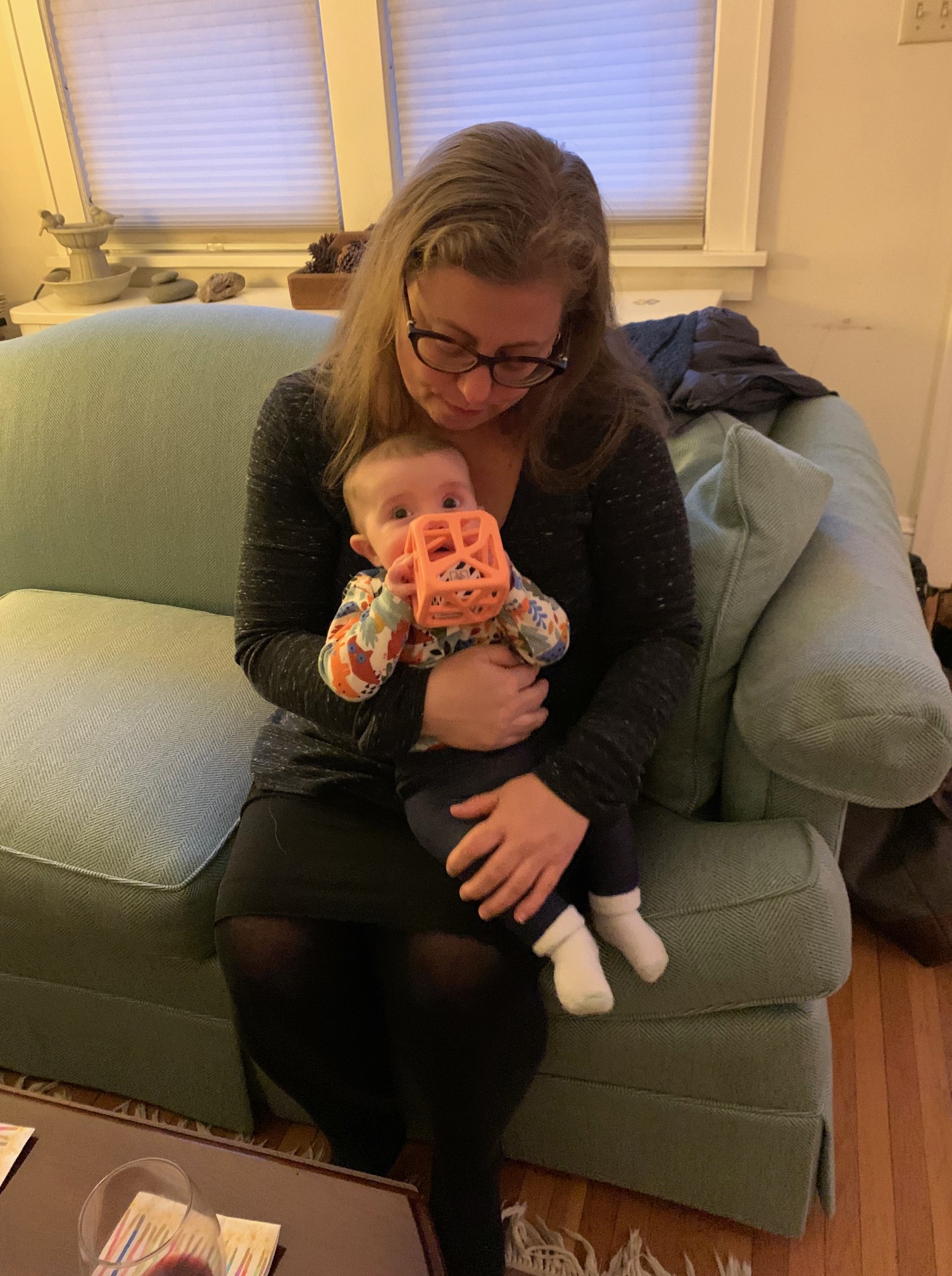
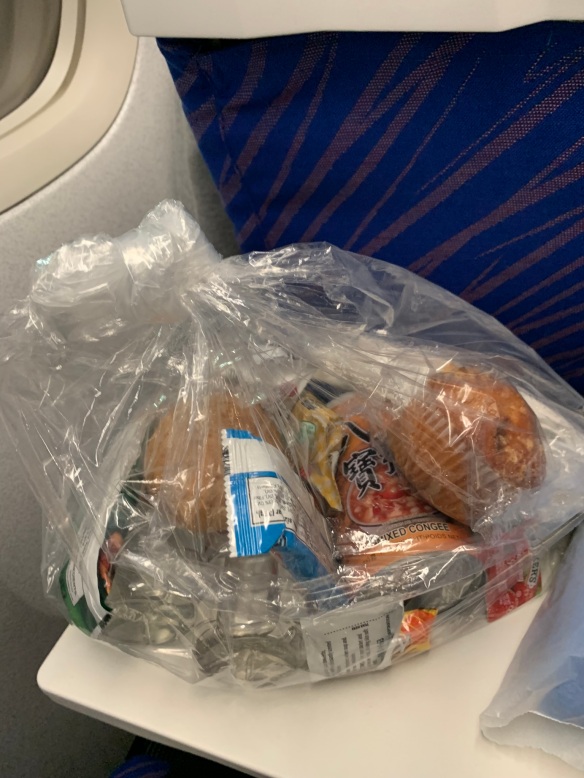
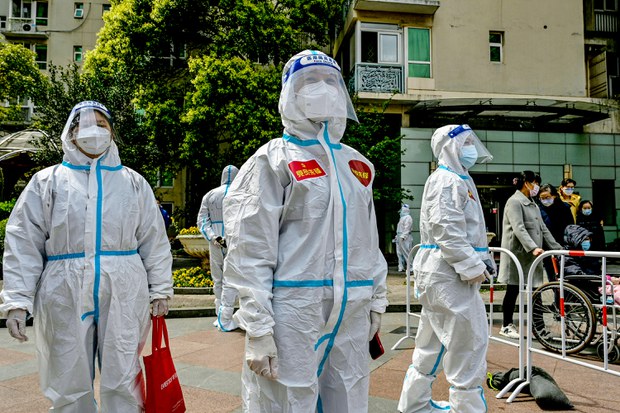
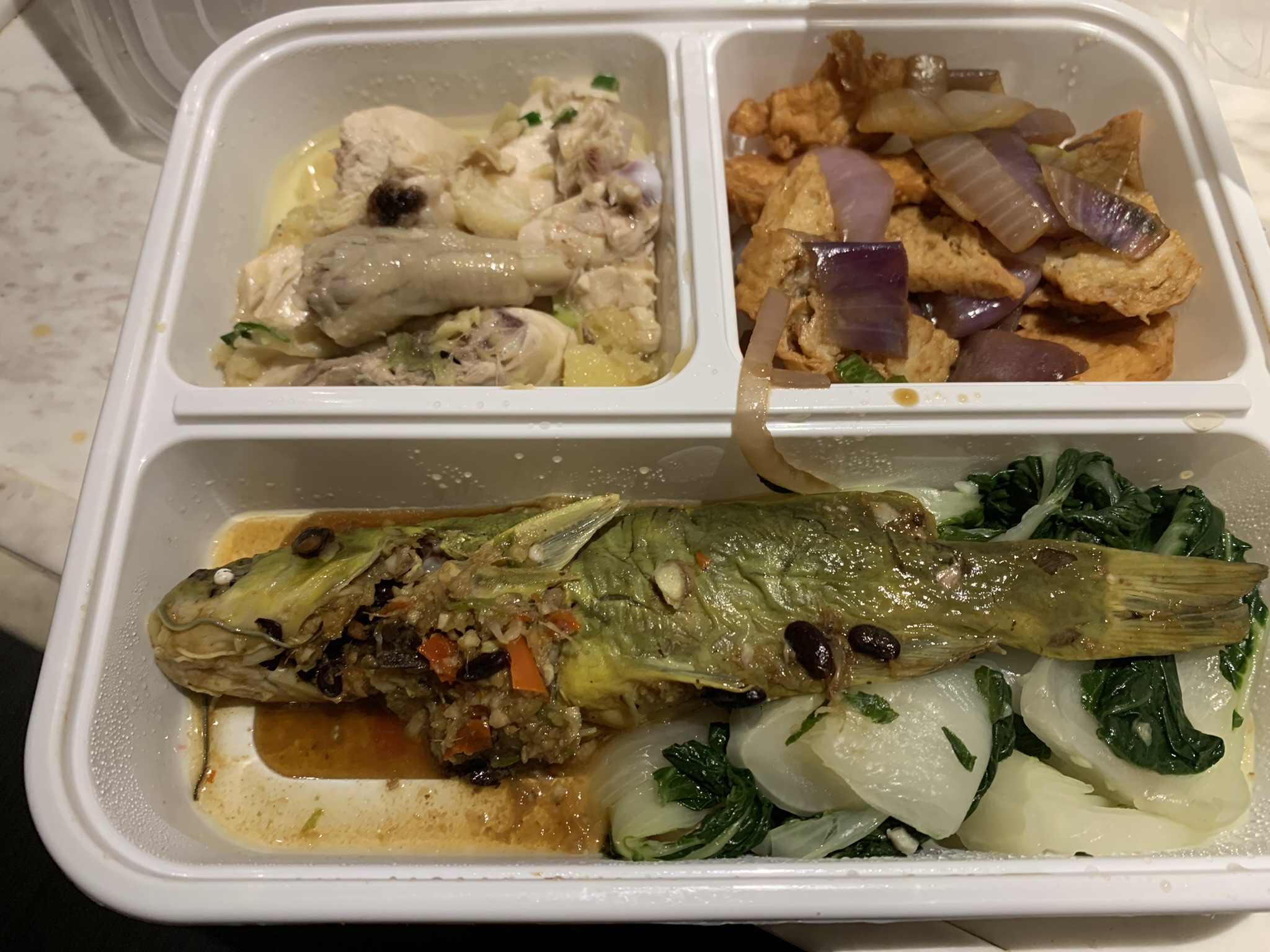
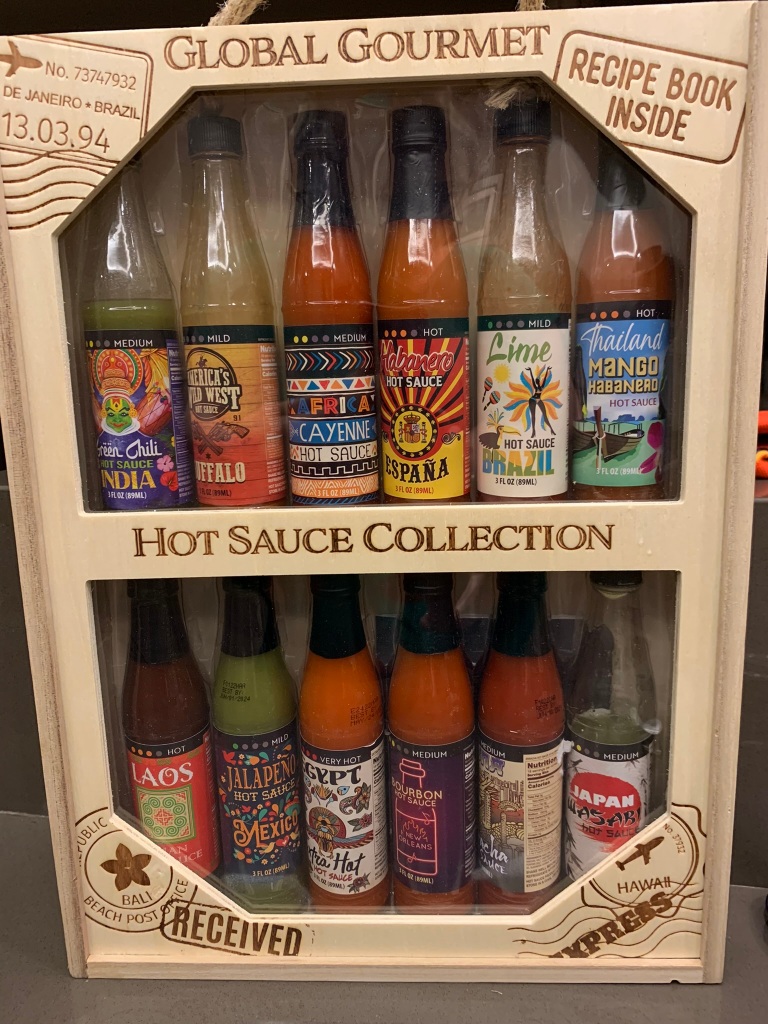

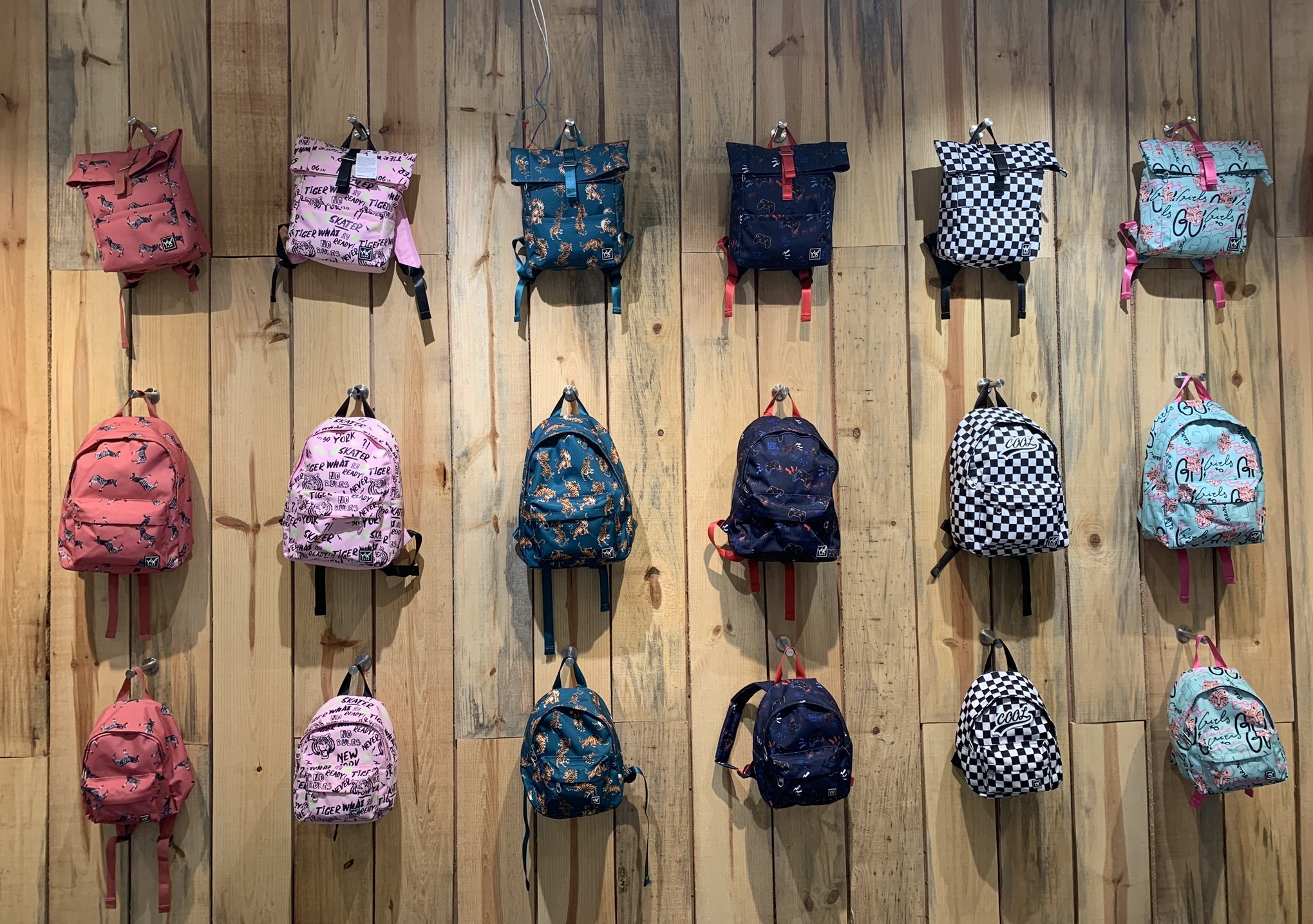
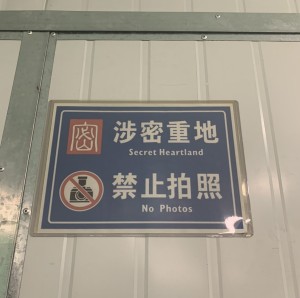
 Here is where I stop to acknowledge the many valid concerns about forced or sweatshop labor in China. And yet, an interesting development in the bag industry: China’s labor is already a bit too expensive for some western retailers. To compete, our guide/factory owner has opened factories in neighboring Myanmar, where labor is cheaper. Much of what they do here in China is now limited to purchasing materials, creating samples, and then shipping those across the border for mass production.
Here is where I stop to acknowledge the many valid concerns about forced or sweatshop labor in China. And yet, an interesting development in the bag industry: China’s labor is already a bit too expensive for some western retailers. To compete, our guide/factory owner has opened factories in neighboring Myanmar, where labor is cheaper. Much of what they do here in China is now limited to purchasing materials, creating samples, and then shipping those across the border for mass production.





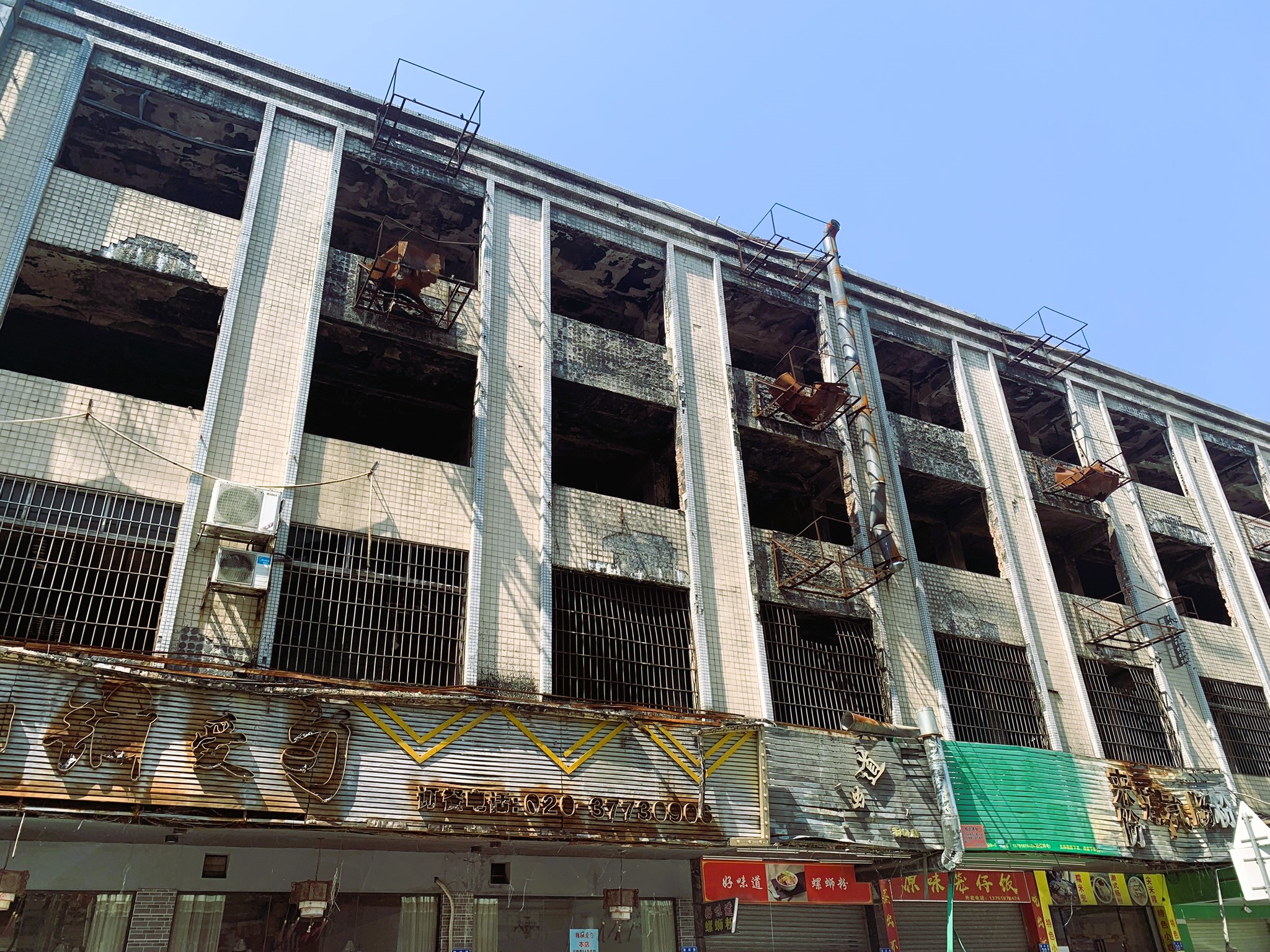

























 Anxious to make use of the free time, I chose a tour of China’s wine country, Ningxia. Yes, there’s wine country in China, although it doesn’t attract the tourists of Napa Valley. Or even
Anxious to make use of the free time, I chose a tour of China’s wine country, Ningxia. Yes, there’s wine country in China, although it doesn’t attract the tourists of Napa Valley. Or even 


















